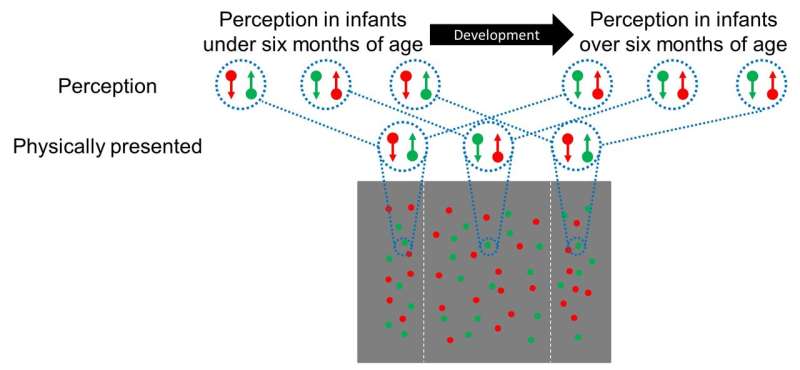This article has been reviewed according to Science X's editorial process and policies. Editors have highlighted the following attributes while ensuring the content's credibility:
fact-checked
peer-reviewed publication
proofread
Study finds that infants are not startled by visual illusions

We, as adults, experience a unified conscious world by integrating various scattered pieces of information from the external environment. To experience consciousness by integrating individual features into one, it is believed that not only aggregating information from lower to higher visual areas but also "feedback processing," where information is sent back from higher to lower visual areas in the brain, plays a crucial role.
While it is known that this process is crucial in the integration of features, its development has not been fully understood until now.
In a new study from Hokkaido University, Chuo University and Japan Women's University, researchers focused on the visual illusion phenomenon called "misbinding" and investigated the developmental process of feedback processing involved in feature integration. Misbinding refers to a visual illusion where two types of features (such as color and motion direction) are mistakenly integrated. It is said to result from feedback processing that attempts to stabilize ambiguous perceptions. The study was published in Proceedings of the Royal Society B
The results of the experiments revealed that infants aged six months and older could perceive the misbinding, experiencing the integration of incorrect features. On the other hand, infants under six months of age did not exhibit misbinding. In other words, it was found that infants under six months of age perceive the ambiguous external world without mistakenly integrating features.
"We have discovered the possibility that younger infants may be living in a more faithful representation of reality than adults. The findings of this study are considered to be a clue to understanding the process of forming the conscious world in adults," said Shuma Tsurumi from Chuo University amd Hokkaido University.
More information: Shuma Tsurumi et al, Infants' visual perception without feature-binding, Proceedings of the Royal Society B: Biological Sciences (2023). DOI: 10.1098/rspb.2023.2134



















